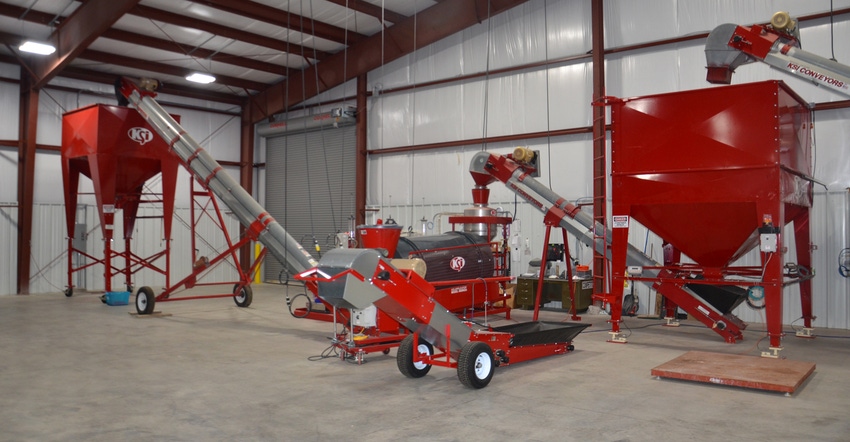October 31, 2019

My seed dealer wants to nail down specific seed treatments. With more and more seed treatments being introduced, I can’t keep up. Which types should I use? Which are cost-effective?
The panel of Indiana certified crop advisers answering this question includes Steve Gauck, Beck’s sales agronomist, Greenburg; Andy Like, Syngenta, Vincennes; and Jeff Nagel, Ceres Solutions agronomist, Lafayette.
Gauck: Nearly all fields have fungi that cause seedling diseases, so you need a fungicide first. Have you had issues with insects feeding on seedling soybeans? Add an insecticide. Do you plant early or have fields with a history of sudden death syndrome? Add a treatment for SDS. Do your fields have a history of nematode damage? Most people don’t know, but soybean cyst nematodes are the No. 1 yield robber, so look for a treatment that controls nematodes.
As for biologicals, they’ve proved effective in many trials. Ask for data on how, when and why to use them to get the best return on your dollar. Using biologicals in the right situations has a good return on investment.
If you’re planting into fallow ground because of prevented planting, use an inoculant seed treatment or dry box treatment for 2020 soybeans.
Like: Most treatments are cost-effective in the right situation. The challenge is identifying where you’re likely to see value from a seed treatment. Review problems you’ve had in the past to prioritize what seed treatment could give you a positive return. If you’re challenged in figuring out what will give you a return, find a certified crop adviser with local knowledge to work through scenarios.
For example, early-planted bean emergence is typically challenged by seedling diseases, and a fungicide seed treatment can prevent replanting. Avoiding a replant situation in one year will pay for the treatment for many years and act as an insurance policy.
Another example would be SDS. Both BASF’s Ilevo and Syngenta’s new Saltro will control SDS, but choosing when to use the products is highly dependent on many variables, including planting date, variety, field disease history, weather, tillage and yield target.
Nagel: Fungicides, insecticides and inoculants have normally been the primary choices and were often bundled together. Biostimulants, biofungicides and nematicides are newer seed treatments. Unfortunately, there isn’t much third-party data research on biologicals.
Think about your system and what will likely improve your chances for a return on investment.
Fungicides. These offer protection against early-season seed rots and blights such as pythium, phytophthora, fusarium, phomopsis and rhizoctonia. You�’re more likely to see a benefit where conditions may slow emergence or there’s a history of seedling blight. Be sure to understand what is in the treatment and what rates offer effective control. If SDS is a concern, Ilevo or Saltro would be good options to help reduce SDS pressure.
Insecticides. These can help with early-season bean leaf beetle and seed corn maggot. Early planting into high residue or manured fields is the best fit.
Inoculants. Some newer ones also contain growth promoters. Target fields that have been corn on corn and rotation fields that are sandy or have low organic matter.
Nematicides. Target fields with a history of higher SCN numbers. Ilevo and Saltro provide nematicidal activity.
Biostimulants and biofungicides. These may well have some good activity in the right situation. They’re hard to evaluate independently.
You May Also Like




